It’s been awhile, but I have some solo time at home for a couple of weeks, so I’m going to do some delving into the different recipe projects here. I’m sure I’ll still do some eating out, but it’s a good chance to just play around in the kitchen without a lot of distractions.  Next up in this particular venture, is the country of Benin, most of which was formerly, Dahomey. It was the Kingdom of Dahomey from 1600 until 1894, when the French took control of the country, changing the name to the Republic of Dahomey, which it remained until 1958, when it became semi-independent and changed its name to French Dahomey, and then just two years later gained full independence and then in 1975 changed to a Marxist government period when it was called the People’s Republic of Benin until 1990 when it became just Benin). Whew!
Next up in this particular venture, is the country of Benin, most of which was formerly, Dahomey. It was the Kingdom of Dahomey from 1600 until 1894, when the French took control of the country, changing the name to the Republic of Dahomey, which it remained until 1958, when it became semi-independent and changed its name to French Dahomey, and then just two years later gained full independence and then in 1975 changed to a Marxist government period when it was called the People’s Republic of Benin until 1990 when it became just Benin). Whew!
The country has somewhere between 10-11 million people, the majority of whom are Roman Catholic, with Islam being the next most common religion. French is the official language, but native languages Yoruba and Fon are commonly spoken. The cuisine is generally highly spiced, and influenced heavily by both surrounding countries, and by the French. Meat is expensive, and fish and chicken tend to be the staples throughout much of the country, though in the north, beef and goat are used a bit more. Yams, black-eyed peas, and beans are the most common starches, and are used in a lot of preparations. Many sauces are tomato and peanut based, and I considered a classic soup based on those flavors, but I know coming up that those are common throughout Western Africa, and decided to go with something more unique to Benin.
So, on to the foods for this particular venture, Akkra Funfun and Owo Soup. And, away we go….
It’s a given that as this project goes on, I’m going to come across unusual flavor profiles – unusual to me, that is – things I’ve not encountered before. And, that I’m going to come across recipes with ingredients that I’m either not familiar with, and/or simply have no access to. In some ways, that’s how this got a little derailed and put on hold, because I just kept looking at ingredients for the various ideas for soup and “bread” from Benin and not being able to come up with a good approach. But, I decided to buckle down and do some more research, read about how people from there who have gone to other countries have come up with work-arounds, and take it from there.
Let’s tackle the easier one, first, the akkra funun. Given the name, and the ingredients, and various versions, I’d guess this to be a distant forebearer to the Brazilian acaraje, a fermented black-eyed pea fritter. Some of the recipes indeed called for black-eyed peas, but just as many seemed to go the white bean route, and I had white beans in house. They need to be pre-cooked, in fact, I finally just decided to open and drain a can of white beans, as a couple of online recipes suggested. A small onion, an egg, some flour, some salt, and cayenne complete the ingredients.
Everything into the food processor and semi-pureed, enough to create a thick batter but still have some texture.
And then scooped into frying oil – I used a small ice cream scoop, and fried.
Flipped when golden brown on the first side…
And, pulled out to drain on some paper towel. Sprinkled with a little more cayenne.
On to the soup…
We’re going to start here, rather than with the full mise-en-place. Why? Because I simply couldn’t find any dry smoked fish anywhere here. I can find dry fish, in the form of salt cod, but it’s heavily salted and it’s not smoked. And I can find smoked fish, but it’s not dry, and mostly it’s just salmon or trout, though that little Russian takeout place I found months back has smoked white fish. Still, not what I needed, which in truth is probably well dried and smoked fish that’s been hung up in a smokehouse or near a cooking fire, until it’s totally “cured” and preserved.
That wasn’t going to happen, I wasn’t going to invest that much time in it. So what I did was took some of the leftover fish from this week’s menu, the tail scraps and one fillet, put them on a rack on one side of my wok, put some foil underneath with coarse salt and wood “chips” (actually finer than chips, designed for the “smoking gun” style smoker, but it’s what I had), off to the other side.
Then I off-centered the wok and put the lid on, so that the flame was just under the salt and wood chips – higher heat to start to get the salt hot and start the wood smoking, then turned down to minimum flame and left it sitting there smoking for a bit over and hour…
…until the fish was not only well smoked, but actually relatively dried out. Not to the point where it needed to be rehydrated as the traditional approach seems to be, but certainly not very moist!
So, now we have our smoked fish for our owo soup, along with a tomato, some palm oil, some chilies, and… okay, here we go, figuring out the ingredients. Next up was a call for ground crayfish paste. Not to be found, but I do have ground shrimp paste. Edible potash? Maybe I could have found it in a chemical supply shop or something, maybe, but according to various online sources, the best sub is baking soda.
And, “locust bean paste”… here, I think I screwed up slightly. Locust bean is the carob bean. So I went with powdered carob. But, I didn’t get the texture to the soup described in the various recipes, and I realize in retrospect that they’re probably talking about locust bean or carob gum, a thickening agent, which would have given me the thick texture to the soup that I was looking for. I probably could have used a little of the carob powder for the flavor, and a bit of something like xanthan gum (since I don’t think I can find carob gum here), which I have, to give that thickened texture. Live and learn.
The tomato, chilies, and shrimp paste went into the food processor and got themselves well pureed.
Then, everything but the palm oil went into the pot, to which I added about a half liter of water. Brought to a boil, heat turned down to low, and simmered for 15 minutes, breaking up the fish as it cooked. Added salt to taste.
And then, a few tablespoons of the palm oil. And here’s where the lack of the thickening agent became obvious, because the palm oil just sat on top, rather than emulsifying into the soup as I whisked it, which it was supposed to do.
And so, we’re down to dinner….
A bowl of the Owo soup and some Akkra funfun on the side. I can’t say that this is one of my favorites of this project so far, in fact, I can safely say it’s my least favorite. Now, part of that may be that it just isn’t exactly the ingredients that should be in it, nor the right texture, but they’re all pretty close, and it isn’t the texture that bothered me – it’s a soup. It’s just that for my palate, it’s an unfamiliar, though not unpleasant, combination of flavors. It was very intense, pungent soup. I’ve mentioned before, way back during my Brazilian cooking classes, that dende, or palm oil, has been described as having the aroma of a giraffe’s cage.
So mix that with the intensity of the shrimp paste, the smokiness of the fish, and then throw in the heat of the chilies, and let’s just say that this soup packed a punch. Normally it’s served with a different starch on the side, either sweet potatoes or plantains that have been steamed or baked, and the sweetness from those probably would have made a better contrast than the white bean fritters, and might have mitigated some of the flavor intensity. Maybe someday someone from Benin will make me the real thing and we’ll see how close I came. But for now, I’ll be moving on to Bermuda.
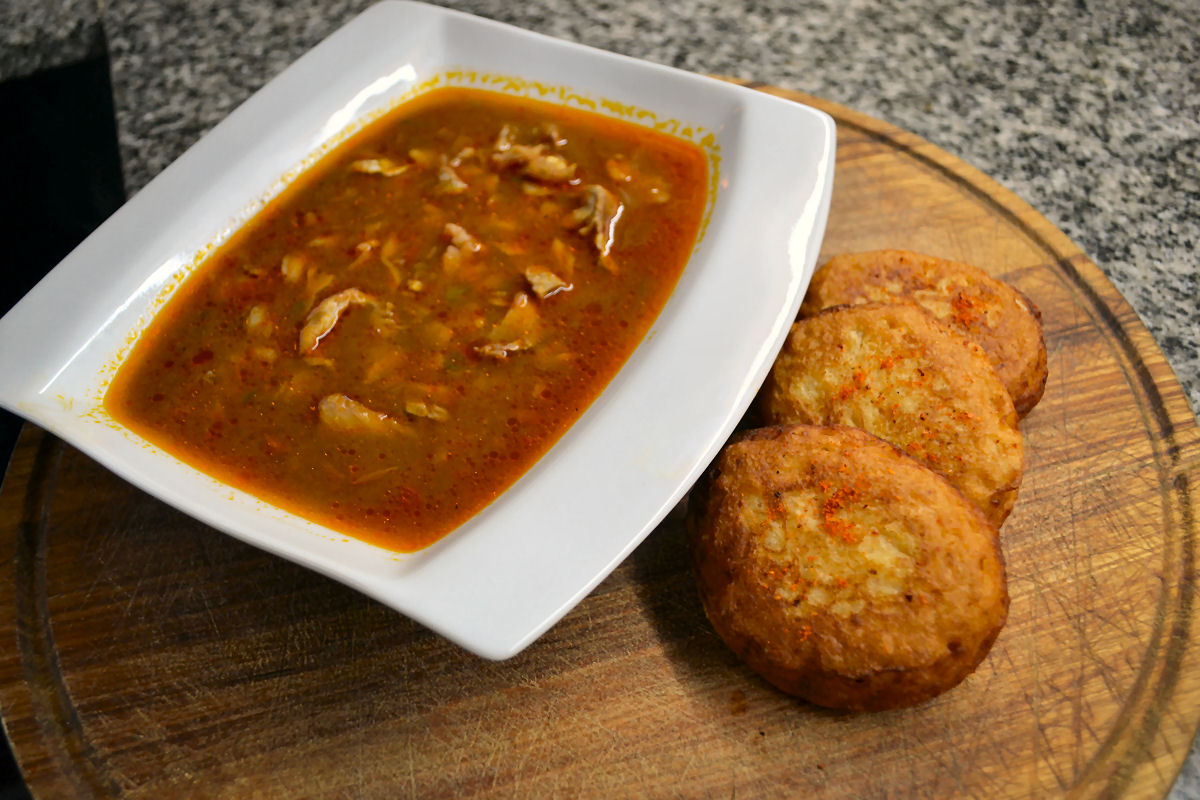
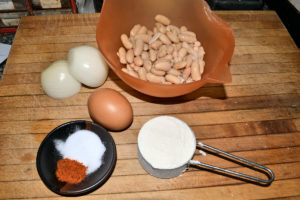
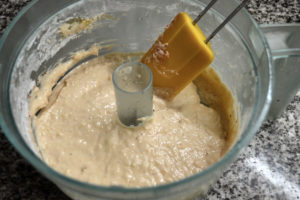
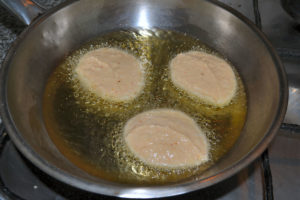
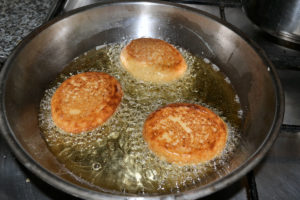
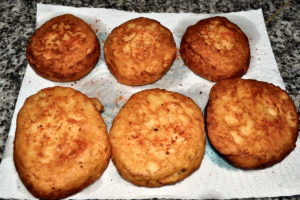
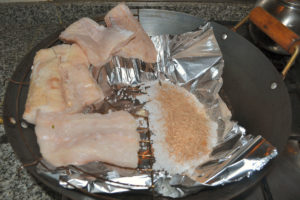
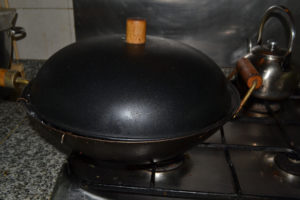
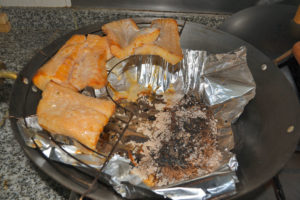
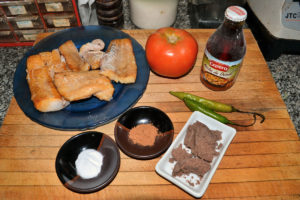
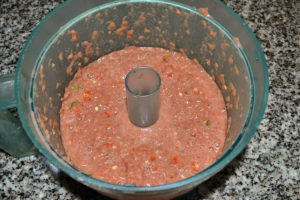
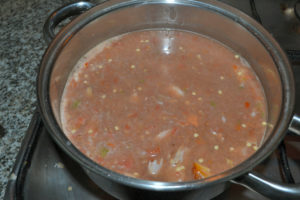
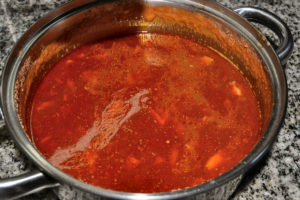
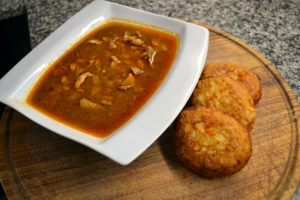
Just one small, insignificant correction: Nancy and I were in the Peace Corp in Ghana from 1973 to 1975 and at that time Benin was still Dahomey. Not sure when it changed name. We had our first bouillabaisse in Dahomey, an ex French colony.
And a question: Where is this little Russian take out place with the smoked white fish? We used to buy it at Ostermar but they don’t carry it anymore. If we could find it again we’d again have the holy Jewish trinity…lox, pickled herring and smoked white fish :=)
Sorry, I should have been clearer on the timeline as to when the changes occurred.
The Russian place is La Comderia. (There is a search box over there in the right hand column….) But where do you find real lox? There’s plenty of smoked salmon around, but real lox is un-smoked salmon, just cured (well, except “Nova lox”, which is lightly smoked, but that’s a Canadian invention).
I buy the smoked salmon at Ostermar but make the real “brined” lox myself. Just salt and sugar applied to salmon for a few days.
I believe Carob Gum is Goma Garrofín in Spanish (or E410 in the European Food Safety Authority’s language).
You can find several sources here: https://www.quiminet.com/productos/goma-garrofin-3585304583.htm (not that I believe it’ll improve the recipe, I just hate not finding ingredients here)
I’m sure it’s findable, it’s just not really worth the effort for something I’d use once. Then again, I didn’t know I was needing it when I made the soup!
[…] time, be it soon or not, Benin, a West African […]